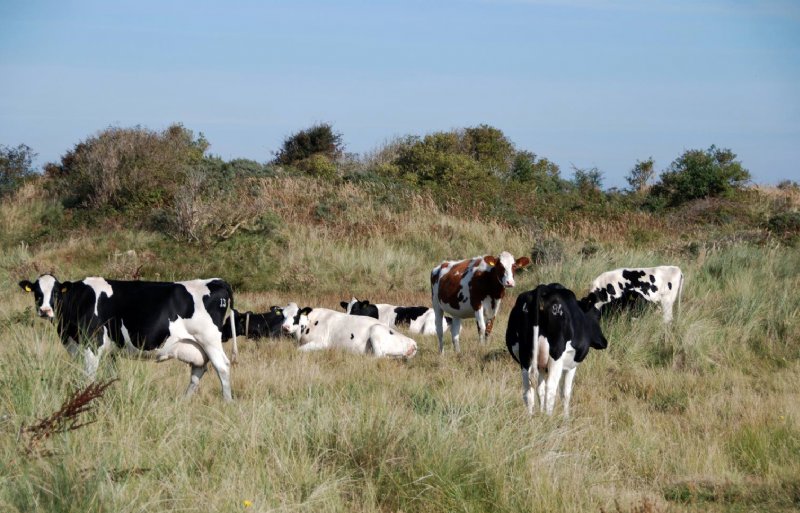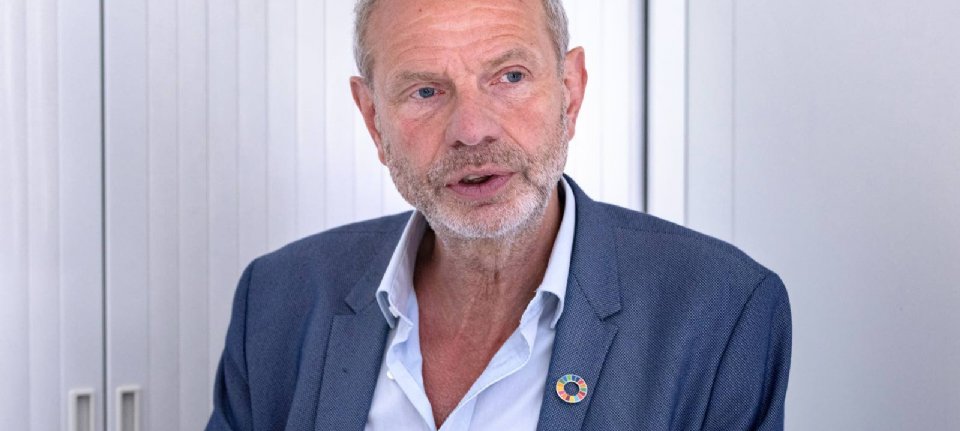Commissioned by Nitrogen Minister Christian van der Waal, nitrogen professor Jan Willem Erismann and fellow scientists Chris Pax and Wim de Vries searched for a legally viable alternative to KDW. They wrote an article about it. Their conclusion was that there was no alternative. At the same time, Erisman argues that KDW can be used in a different way.
There is no general view of agriculture in the Netherlands and where it is headed
Jan Willem Erismann, Professor of Environment and Sustainability
Why is there no alternative to KDW?
There is no environmental indicator that indicates the state of nature in a way that you can base policy on. If you want a policy on nitrogen to remove the pressure it puts on nature, you need to be able to manage emissions.
What makes it so hard to find an alternative to KDW?
You need a tool that says something about the relationship between the nitrogen contribution to the normal quality measured and the person contributing the nitrogen. Then you end up at KDW. No other environmental indicator indicates the situation in such a way that you can base policy on it.
You can remove the CDW from the law and replace it with an emission cap, but in the end you still have to remove the stressors on nature, and one of those stressors is nitrogen. You will also have to take other actions. You have to do something about the water level and the antics and manage them. But it is one and one. It’s not that nitrogen no longer plays a role when you’re doing all that other stuff. Nitrogen remains a stressor. If you want a policy on nitrogen to remove that pressure, you need to be able to manage emissions.
Various groups support measurements in nature reserves. Is this an alternative option?
I am not against research in nature reserves. But KDW is a directional indicator. If you’ve been much above CDW for a long time, the effects of nitrogen are visible in the soil, in the vegetation, but also in the insects. Then you know you have to come back in emissions, as long as the tax is very high. You just don’t know how far. Only when you make a significant reduction does it become more interesting to look at nature. You can then look at the second phase of the policy to see if you need to reduce emissions further or if all is well.
Take Schiermonnikoog as an example. There, farmers’ nitrogen emissions were reduced by 40 percent. I am curious if nature will recover and how quickly.

What is the main recommendation of your article?
The article depends on what the farmer needs. It is not the responsibility of the farmer to improve the quality of nature. This should be the sum total of the policy. Translate it to the yard so that the farmer can send it there. They themselves know how to achieve goals.
“One of the most important points is that you make each sector responsible for exceeding the KDW. Make sure that the NOx sectors become responsible for exceeding it. And also agriculture and outdoors. The three require different policies.
There is traffic and industry policy based on climate plans. Agriculture should focus on emissions. This means that the objectives of the three sectors are always achievable. By making each person responsible for his lot, you make it fair and manageable. You are blocking exchanges between sectors. Wealthy parties like Schiphol would no longer be able to buy farmers. They themselves must contribute to the reduction.
The second point is that you can only give space if you make a cut within your own sector. Then you can use a small portion of that space for your own. This way you get rewarded for performing on your own.
Finally, you can do without a precipitation test by focusing on your emissions policy. You don’t then need Aerius and KDW to get permits because you are bound by emissions caps. This is used as a basis for policy rather than an assessment of the sedimentation contribution. This still needs to be resolved.
What do you think of social controversy?
“I think we have made it very difficult for ourselves legally. Almost four years have passed since the State Council’s decision. Politicians are unable to show leadership from the beginning and say we will reduce nitrogen so and so. It is fair with an eye for agriculture.
“Because we make it difficult, decisions are put off and then frustration builds up and space to speculate and question things. It doesn’t help, because it distracts from the essentials: nitrogen emissions need to be reduced. Everyone agrees.
Compare it to corona. Then Rutte said “With 50 percent uncertainty, we take 100 percent action. They don’t do it with nitrogen. With 50 percent uncertainty, they set up all kinds of committees and ask Remkes for advice. That’s the big difference.”
How do we create space for permits?
You can only create space for permits, expansion or PAS detectors if you are able to reduce nitrogen deposition. Then the space is created. Then you can enter a threshold value and see how you handle the license. As long as you don’t create the space, we’ll be stuck.
Could Europe’s recent pause plans give space?
It is possible, but if no one uses it because it was on a voluntary basis or because the scheme is not attractive enough, things will not improve.
Personally, I am not in favor of a plan to buy out all peak lifters. If you choose to, the buying scheme is only really effective if you start buying in a targeted way. in which you look at the companies that make the greatest contribution to deposition in all regions of nature. This way you can make the most profit and you can create space. With a volunteer scheme, you have to wait and see if the right companies get involved.
What’s the alternative?
I am in favor of setting goals and letting the sector decide for itself how to achieve them. If they then want to buy, there must be an arrangement, but not the other way around. Do not start in this order.
I think many farmers want to do something, but they don’t know what and how. These farmers are not helped with the peak tax scheme. It is bought or allowed to move. Instead, the government should help farmers move to a level where they are clear for the long haul. Farmers were helped in this. A buying scheme might be part of this, but that’s not what farmers need. It’s about individual mentoring: what do they have to meet, what can they focus on and what does that mean for their company?
So how do we start?
You have to look at where we want to go in the Netherlands with agriculture and industry. Are there certain sectors that fit the Netherlands that we have in mind, or should we slowly say goodbye to that? You can then look at emissions, but also at returns to society. If you have high environmental costs and the economic benefits don’t end in the Netherlands, you might be wondering if you want it to the Netherlands. Look at those sectors and engage in dialogue with them.
Partly I’m thinking of growing veal. Peking duck is another example. I think there are more options to choose from. I don’t make these choices, but it would be a good idea to start making these kinds of choices from a cultivation vision. It’s not just about nitrogen, it’s also about greenhouse gases, water quality, landscapes, and biodiversity.
So is it really a lack of vision?
‘Yes I think so. There is no general view of agriculture in the Netherlands and where it is headed. There is no vision through which farmers and the agricultural sector can make good choices. I do not think that the agricultural agreement will achieve this vision.
Nitrogen is the canary in the coal mine. This is the short term. This is due to the problem of water and climate which is likely to put more pressure on agriculture.
There is now money to solve the nitrogen problem, so set a vision and make sure the money is used as effectively as possible. Make sure you apply for future farming. That is why I am against buying, because this does not guarantee the future. That might give space to those who stay, but even then they’ll have to deal with climate and water quality later.
Professor of nitrogen in the Netherlands
Jan Willem Erisman (61 years old) has been Professor of Environment and Sustainability at Leiden University since 2020, within the Leiden Center for Environmental Sciences. He has also served as Chair of the Scientific Climate Council since 2023. Ehresmann is Professor of Nitrogen in the Netherlands. In 2009 he was appointed Professor by Special Appointment of Integrated Nitrogen Studies at VU University Amsterdam. He has also worked at Utrecht University, RIVM, ECN and the Louis Polk Institute.

“Total coffee specialist. Hardcore reader. Incurable music scholar. Web guru. Freelance troublemaker. Problem solver. Travel trailblazer.”









More Stories
Brabanders are concerned about climate change.
The “term-linked contract” saves space on the electricity grid.
The oystercatcher, the “unlucky national bird,” is increasingly breeding on rooftops.